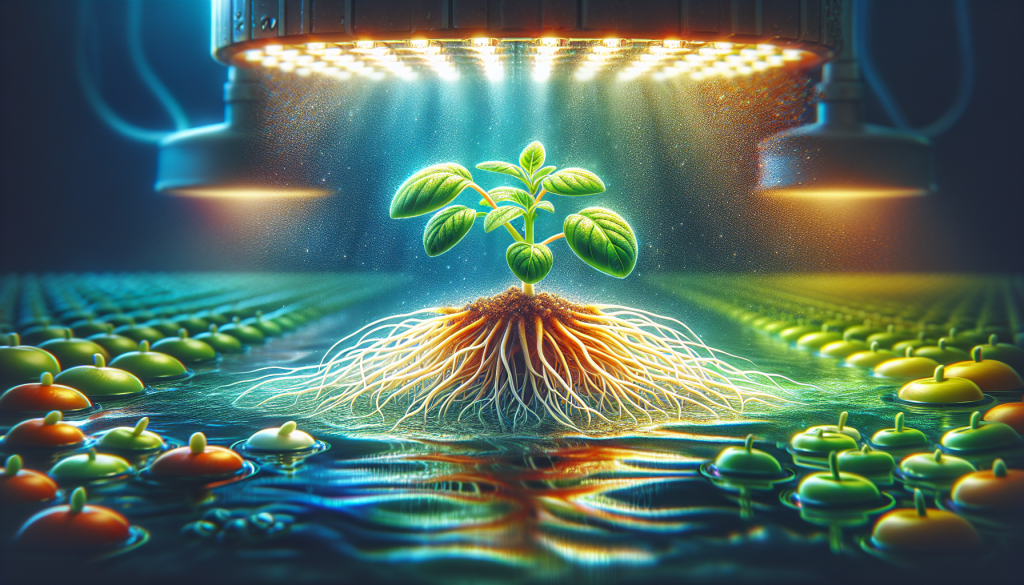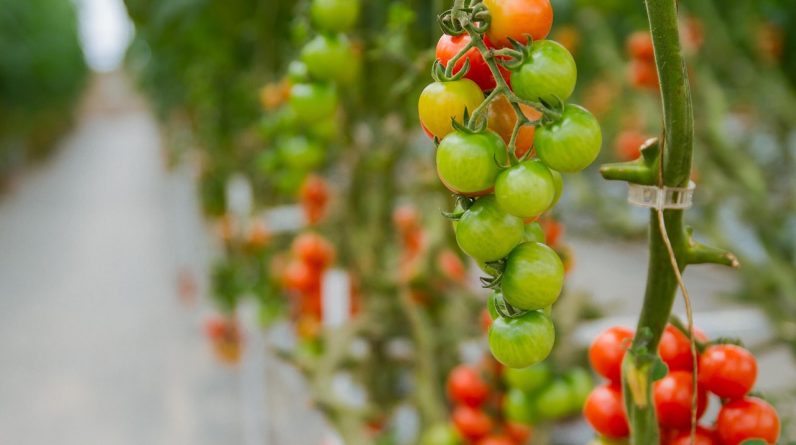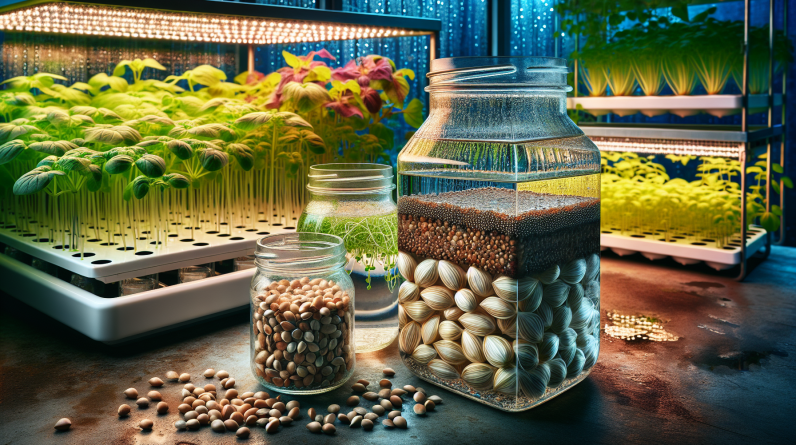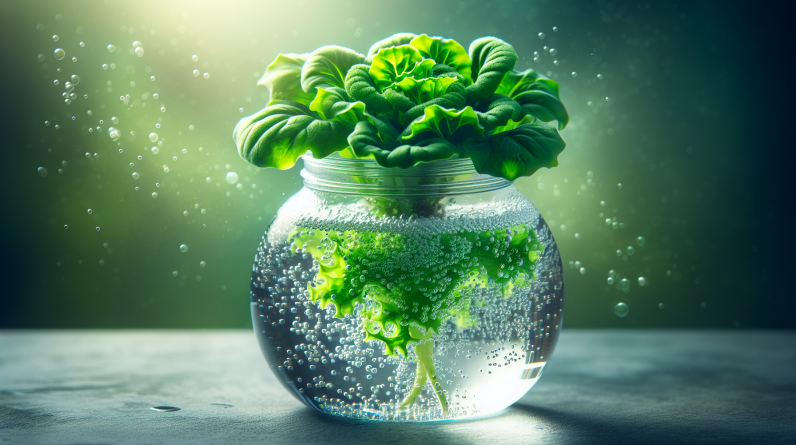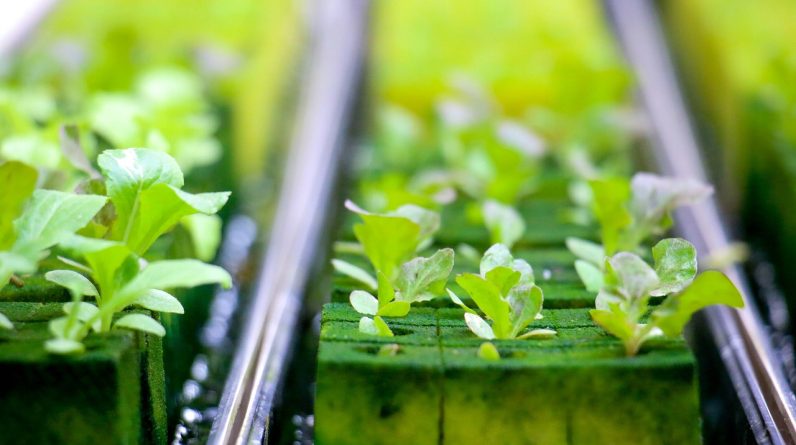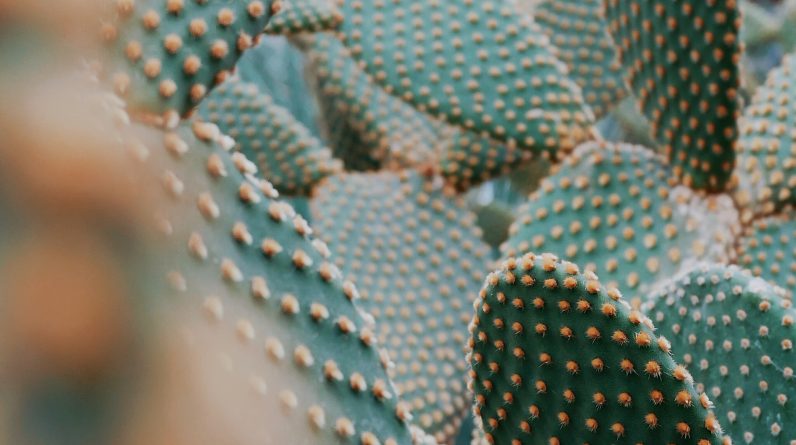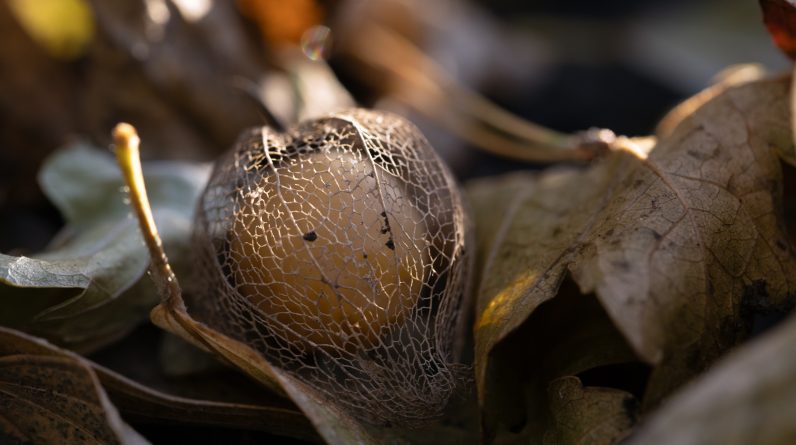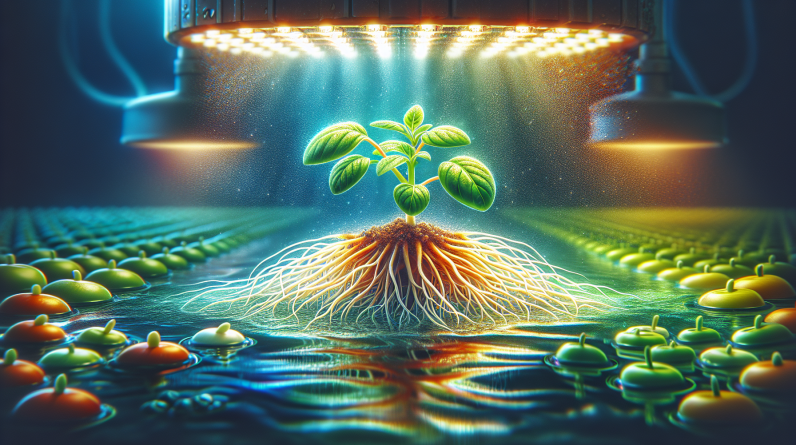
Have you ever wondered if it is possible to skip the traditional soil-based method of germinating seeds and instead directly place them into a hydroponic system? Well, in this article, we will explore this intriguing question and uncover whether it is indeed feasible to put seeds straight into hydroponics. Get ready to discover the possibilities and potential benefits that this alternative method could offer for your hydroponic gardening endeavors.
Germinating Seeds for Hydroponics
Choosing the Right Seeds
When germinating seeds for hydroponics, it is important to select the right seeds for your desired crop. Consider factors such as the type of vegetable or herb you want to grow, its growth requirements, and your personal preferences. Some seeds are more suitable for hydroponic systems due to their ability to thrive without soil, while others may require additional support. Research and choose seeds that are known to perform well in hydroponic environments.
Pre-soaking Seeds
Pre-soaking seeds before germination can help promote successful germination. Soaking seeds in water for a specific amount of time can soften the seed coat, making it easier for the seed to sprout and absorb moisture. The appropriate duration for pre-soaking varies depending on the type of seed, so it is important to follow the instructions provided by the seed supplier. This process can significantly improve germination rates and lead to healthier seedlings.
Germination Temperature
Maintaining the correct germination temperature is crucial for successful seed germination. Different plant species have different temperature requirements for optimal growth. Generally, the ideal germination temperature ranges between 68°F to 86°F (20°C to 30°C). Using a seed-starting heat mat or germination chamber can help create a consistent and favorable temperature environment for the seeds.
Light Requirements
Light is an essential factor for seed germination. While some seeds can germinate in darkness, others require light to initiate the germination process. It is important to understand the light requirements of the particular seeds you are germinating. If your seeds require light, you can use artificial grow lights or natural sunlight to provide the necessary illumination. Adjust the distance and duration of light exposure according to the specific needs of the seeds.
Germination Medium
Choosing the right germination medium is crucial for ensuring successful germination in a hydroponic system. Common options for germination mediums include rock wool, coco coir, perlite, or vermiculite. These mediums provide excellent moisture retention and aeration for the seeds. Ensure that the germination medium is properly moistened before planting the seeds. This will provide an optimal environment for the seeds to start their growth.
Preparing Hydroponic System for Seedlings
Selecting a Hydroponic System
Before planting your germinated seeds, you must select a suitable hydroponic system. There are various types of hydroponic systems available, such as nutrient film technique (NFT), deep water culture (DWC), and drip irrigation systems. Each has its own advantages and suitability for different types of crops. Consider factors such as space availability, crop type, and personal preference when choosing the hydroponic system for your seedlings.
Cleaning and Disinfecting
To ensure the health of your seedlings and prevent the spread of diseases, it is essential to clean and disinfect your hydroponic system before planting. Clean all components of the system, including grow trays, reservoirs, and tubing, using a mild detergent and warm water. Rinse thoroughly to remove any residue. Disinfect the system by using a solution of hydrogen peroxide or a commercial disinfectant specifically designed for hydroponic systems. This step will help create a sterile environment for your seedlings to thrive.
Adding Nutrient Solution
Hydroponic systems rely on nutrient solutions to provide essential nutrients to the growing plants. Before planting your seedlings, prepare the nutrient solution according to the recommended ratios for your specific crop. Measure the appropriate amount of base nutrients and additives, and mix them thoroughly in the water. Adjust the pH level of the solution as needed to ensure optimal nutrient uptake by the plants. Carefully pour the nutrient solution into the reservoir of your hydroponic system.
Adjusting pH Level
Maintaining the correct pH level of the nutrient solution is crucial for nutrient availability to the plants. Determine the recommended pH range for your specific crop and adjust the pH level of the nutrient solution accordingly. Most plants thrive in a pH range of 5.5 to 6.5. Use a pH test kit or a digital pH meter to monitor and adjust the pH level as needed throughout the growing period. This will ensure that your seedlings receive the necessary nutrients for healthy growth.
Temperature and Humidity Control
Controlling temperature and humidity levels in your hydroponic system is important for the overall health and growth of your seedlings. Aim for a temperature range of 68°F to 77°F (20°C to 25°C) for optimal growth. Use a thermometer to monitor the temperature inside your hydroponic system and make any necessary adjustments. To maintain the appropriate humidity level, consider using a humidifier or a dehumidifier, depending on the environmental conditions. Consistent temperature and humidity control will promote healthy seedling development.
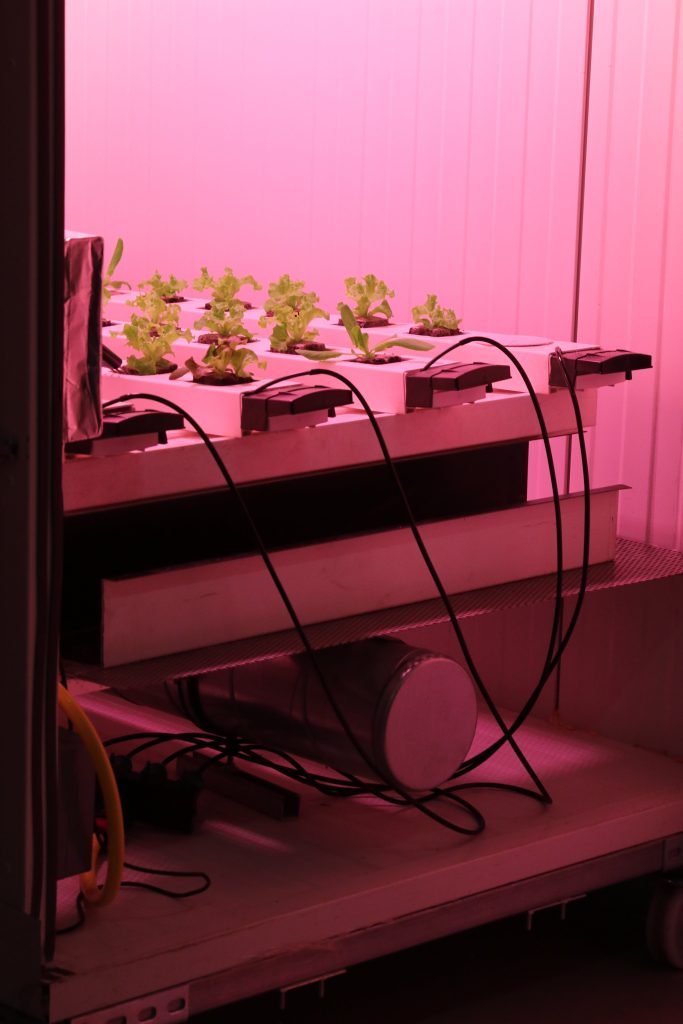
This image is property of images.pexels.com.
Planting Seeds in Hydroponics
Seeding Techniques
When planting seeds in a hydroponic system, there are different techniques you can choose from. Some common methods include direct seeding, using seedling plugs, or using seedling cubes. Direct seeding involves placing the seeds directly into the germination medium of your hydroponic system. Seedling plugs and cubes provide a more controlled environment for the seeds to germinate before transplanting into the main hydroponic system. Select the technique that best suits your crops and the specific requirements of your hydroponic setup.
Sowing Seeds in a Growing Medium
To plant seeds using the direct seeding method, gently press the seeds into the germination medium of your hydroponic system. Ensure the seeds are in good contact with the moist medium without being buried too deep. The germination medium provides support and moisture for the seeds to sprout and grow. Follow the recommended seed spacing guidelines provided by the seed supplier to avoid overcrowding and ensure proper airflow around the seedlings.
Placing Seeds in a Propagation Tray
If you choose to use seedling plugs or cubes, start by placing the seeds in the pre-made holes or depressions of the tray. Ensure that the seed is properly positioned and not covered too deeply. The tray will provide a controlled and separate environment for the seeds to germinate before being transplanted into the main hydroponic system. Place the tray in a well-lit area or under grow lights to provide the necessary light for germination.
Covering Seeds
After planting the seeds, it is important to cover them appropriately to create a favorable and protected environment for germination. Depending on the germination medium used, you may need to lightly cover the seeds with a thin layer of the medium or a plastic dome. This will help retain moisture and provide a consistent temperature for germination. Avoid covering the seeds too heavily as this may hinder their ability to sprout and grow.
Providing Optimal Conditions
To ensure successful germination, it is crucial to provide optimal conditions for the planted seeds. Maintain the appropriate temperature and humidity levels as discussed earlier. Monitor the moisture levels of the germination medium and adjust as necessary to keep it consistently moist without being overly wet. Provide the necessary light requirements for the seeds according to their specific needs. Regularly check the seeds for any signs of growth and make any necessary adjustments to provide the best conditions for healthy seedling development.
Caring for Hydroponic Seedlings
Maintaining Moisture Levels
Proper moisture management is essential for the healthy growth of hydroponic seedlings. The germination medium should always remain moist but not waterlogged. Monitor the moisture levels regularly and water as needed. Avoid allowing the medium to dry out completely, as this can lead to seedling stress or even death. If the medium becomes too wet, adjust the watering schedule or drainage system to prevent waterlogging and root rot.
Monitoring Nutrient Solution
As your hydroponic seedlings continue to grow, it is important to monitor the nutrient solution levels and adjust as necessary. Seedlings have specific nutrient requirements that may change as they develop. Regularly check the nutrient levels in the reservoir and add the appropriate amount of nutrient solution to maintain the desired concentration. Be cautious not to over-fertilize, as this can cause nutrient burn or damage to the seedlings.
Pruning and Thinning
Pruning and thinning seedlings are essential for promoting healthier growth and preventing overcrowding. As the seedlings grow, carefully remove any weak or damaged seedlings to allow more space and resources for the stronger ones. Thinning can also help prevent the spread of diseases or pests among the seedlings. Additionally, prune any excessive foliage or root growth that may hinder proper air circulation or nutrient uptake.
Supporting Seedlings
Some seedlings may require additional support as they grow taller or develop heavier foliage. Install trellises, stakes, or hydroponic netting to provide structural support for the seedlings. This will prevent them from bending or breaking under their own weight and ensure proper growth. Regularly monitor the seedlings and adjust the support structures as needed throughout their development.
Preventing Disease and Pest Issues
Hydroponic seedlings are not immune to diseases and pest infestations. Preventive measures such as maintaining proper hygiene, regularly cleaning the hydroponic system, and practicing good sanitation practices can help minimize the risk of diseases. Monitor the seedlings for any signs of pest damage or diseases and take immediate action if necessary. Introducing beneficial insects or using organic pest control methods can help manage pest issues without harming the seedlings or the environment.
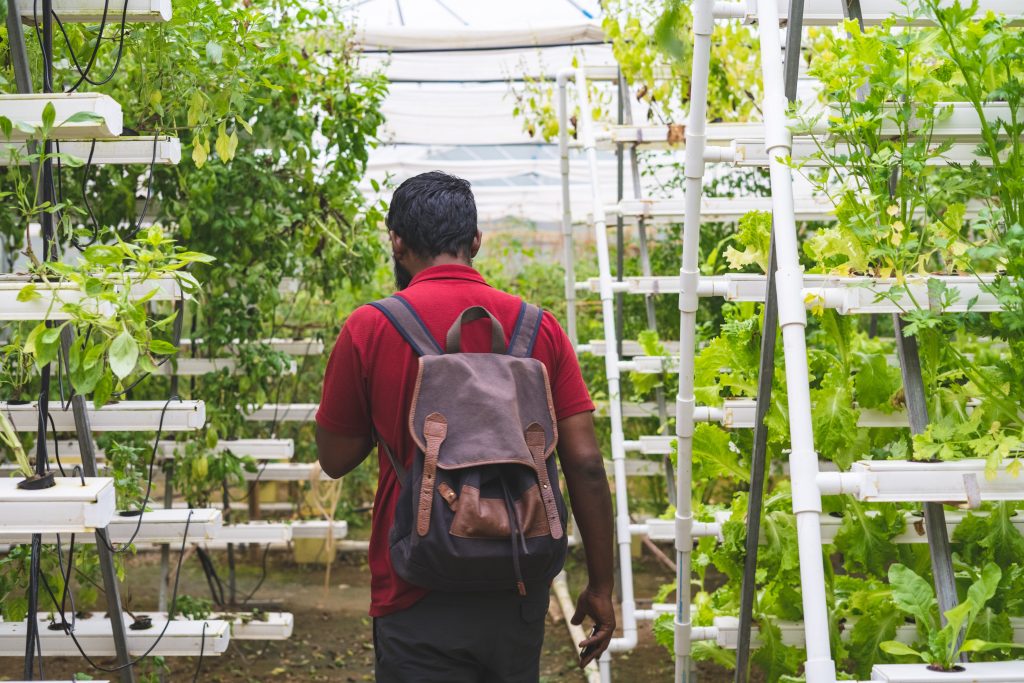
This image is property of images.pexels.com.
Transplanting Hydroponic Seedlings
Determining Seedling Readiness
Before transplanting your hydroponic seedlings into the main hydroponic system, it is important to ensure they are mature enough and have developed strong root systems. Usually, seedlings are ready for transplanting when they have formed true leaves and are at a suitable size for handling. Gently lift the seedlings from their current growing medium to examine their root health. If the roots appear healthy and well-developed, they are ready for transplanting.
Transferring Seedlings to the Hydroponic System
When transferring the seedlings to the main hydroponic system, handle them with care to avoid damaging the delicate roots. Make a hole or a space in the growing medium of your hydroponic system for each seedling. Gently place the seedling into the hole, ensuring that the roots are properly positioned and covered with the growing medium. Press the medium lightly around the seedling to provide stability and support.
Adjusting Nutrient Solution
After transplanting the seedlings, it is important to adjust the nutrient solution in the main hydroponic system to accommodate the newly introduced plants. Monitor the nutrient levels in the reservoir and make any necessary adjustments to maintain the proper nutrient concentration. Seedlings may have different nutrient requirements compared to mature plants, so it is important to adjust the solution accordingly for optimal growth.
Monitoring and Adjustment
Once the seedlings have been transplanted, carefully monitor their progress and make any necessary adjustments to ensure their healthy development. Regularly check the moisture levels, nutrient solution concentration, and pH levels in the hydroponic system. Monitor for any signs of stress or nutrient deficiencies and take appropriate action. By closely observing the seedlings and responding to their needs, you can help them thrive in their new hydroponic environment.
Seedling Development in Hydroponics
Providing Sufficient Light
As the hydroponic seedlings continue to grow, it is crucial to provide them with sufficient light for optimal development. Adjust the distance between the grow lights and the seedlings as they grow taller to prevent light burn or stretching. Ensure that the light is evenly distributed across all the seedlings to promote uniform growth. Consider using timers to ensure a consistent light schedule, providing the recommended duration of light exposure for the specific crop.
Nutrient Solution Management
Continued management of the nutrient solution is essential for the seedlings’ ongoing development. Regularly monitor the nutrient levels in the reservoir and adjust as necessary. As the seedlings grow, their nutrient requirements may change, so it is important to provide the appropriate nutrient concentrations to support their growth. Monitor the pH levels closely and make any necessary adjustments to ensure optimal nutrient uptake.
Managing Environmental Factors
Maintaining optimal growing conditions is crucial for the healthy development of hydroponic seedlings. Regularly monitor the temperature and humidity levels inside the growing area. Adjust the ventilation system or use fans to provide proper air circulation, prevent excessive heat buildup, and minimize humidity issues. Also, evaluate the CO2 levels, as seedlings may require supplemental CO2 to support photosynthesis and growth.
Supporting Plant Growth
As the hydroponic seedlings grow, they may require additional support to ensure strong and sturdy plant development. Install trellises, stakes, or other support structures as needed to prevent the plants from bending or breaking under their own weight. Regularly prune any excessive foliage or side shoots to direct the plant’s energy towards healthy growth and fruit production. Supporting the plants helps maintain an optimal growing posture and promotes optimal light penetration.
Monitoring and Troubleshooting
Continuously monitor the hydroponic seedlings for any signs of stress, nutrient deficiencies, pests, or diseases. Regularly inspect the plants for any abnormalities, such as yellowing leaves, stunted growth, or discoloration. Promptly diagnose and address any issues that arise to prevent further damage to the seedlings. Maintain proper hygiene and cleanliness in the growing environment to minimize the risk of diseases and pests.
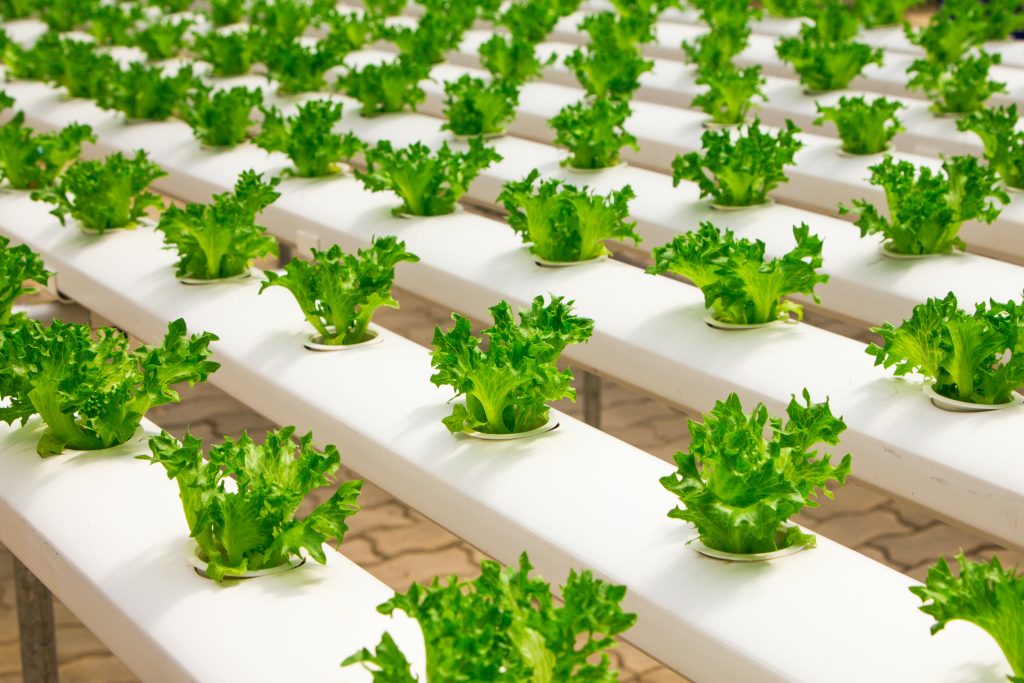
This image is property of images.pexels.com.
Benefits and Considerations
Increased Growth Rate
One of the significant benefits of hydroponic seed germination is the potential for increased growth rates. With proper nutrient and environmental management, hydroponic seedlings often grow faster compared to their soil-grown counterparts. This accelerated growth can result in earlier harvests and increased overall productivity.
Conservation of Water and Resources
Hydroponic systems are known for their water efficiency. Unlike traditional soil-based gardening, hydroponics uses a recirculating system that conserves water by reusing it in the nutrient solution. Additionally, hydroponic systems require less space and can be set up indoors or in areas with limited access to arable land. This resource-efficient approach makes hydroponics an attractive option for sustainable agriculture.
Better Control over Nutrient Supply
In hydroponics, growers have precise control over the nutrient supply to the plants. This allows for a tailored approach to meet the specific nutritional needs of each crop, ensuring optimal growth and development. With the ability to adjust nutrient concentrations and ratios, hydroponic systems provide a more precise and efficient way to deliver nutrients to the seedlings.
Monitoring and Adjusting Factors
Hydroponics offers the advantage of closely monitoring and adjusting various factors that affect plant growth. Growers can fine-tune parameters such as nutrient concentration, pH levels, light duration, and environmental conditions to optimize plant growth. This ability to make real-time adjustments allows for quick responses to any issues that may arise, resulting in healthier and more productive seedlings.
Initial Setup and Cost
While hydroponic systems offer numerous benefits, it is important to consider the initial setup and cost associated with this type of gardening. Setting up a hydroponic system requires investment in equipment such as grow lights, pumps, timers, and nutrient solutions. Additionally, there may be ongoing costs for electricity, maintenance, and replacement components. However, the long-term potential for increased yields and resource efficiency may outweigh the initial investment.
Choosing the Right Seeds for Hydroponics
Determining the Desired Crop
When choosing seeds for hydroponics, consider the specific vegetable or herb you want to grow. Different crops have different growth requirements and adaptability to hydroponic systems. Determine the desired crop you want to grow and select seeds that are known to perform well in hydroponic environments.
Choosing between Open-pollinated and Hybrid Seeds
There are two main types of seeds available: open-pollinated and hybrid. Open-pollinated seeds are produced from plants that are pollinated naturally by wind, insects, or other means. These seeds produce plants with characteristics similar to their parent plants. Hybrid seeds, on the other hand, are created by cross-pollinating two different parent plants to produce offspring with specific desired traits. Consider the advantages and limitations of each seed type when making your selection.
Considering Seed Quality
Seed quality is a crucial factor when selecting seeds for hydroponics. Look for seeds that are fresh, plump, and have a high germination rate. Avoid seeds that have visible damage or signs of disease. Purchase seeds from reputable suppliers who provide detailed information about the seed’s origin, germination rate, and any additional treatment. High-quality seeds will give you the best chance for successful germination and healthy seedling development.
Selecting Vegetative or Fruiting Varieties
Depending on the type of crop you choose, you may need to decide between vegetative or fruiting varieties. Vegetative varieties are typically grown for their leaves and stems, while fruiting varieties are grown for their fruits or flowers. Consider your specific goals and preferences when selecting the appropriate variety for your hydroponic system.
Choosing Disease and Pest Resistant Varieties
When growing plants hydroponically, it is important to select disease and pest-resistant varieties. Hydroponic systems can be susceptible to certain diseases and pests, so choosing seeds that are known to have natural resistance can help mitigate these issues. Look for varieties that have been specifically bred or selected for their resistance to common hydroponic pests and diseases in order to reduce the risk of crop loss or damage.
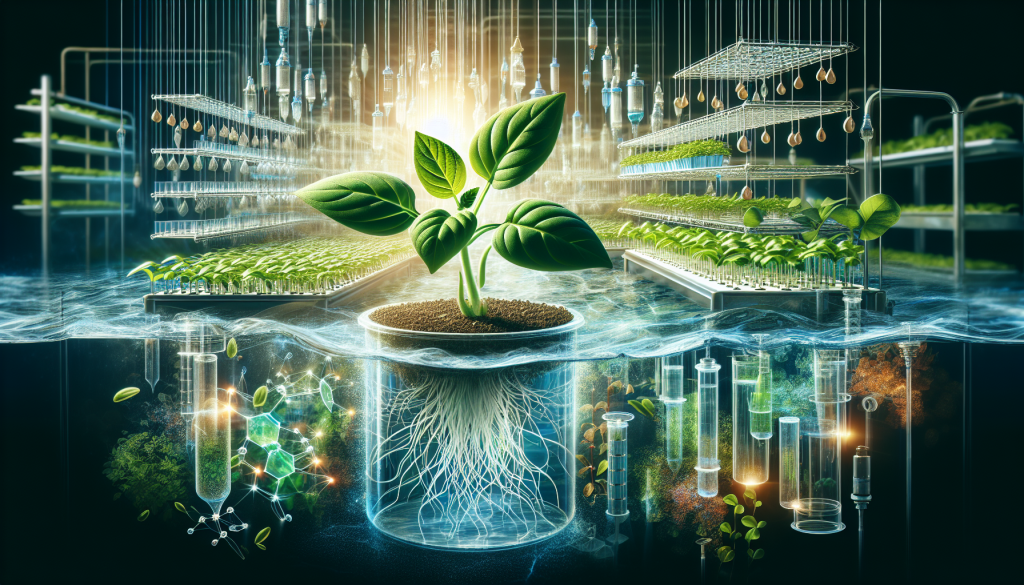
Pre-soaking Seeds for Hydroponics
Benefits of Pre-soaking
Pre-soaking seeds before germination offers several benefits for hydroponic seed starting. Soaking seeds can help soften the seed coat, enabling water absorption and promoting faster and more uniform germination. It can also enhance the overall germination rate by providing optimal conditions for the seed to break dormancy and start its growth cycle. Pre-soaking can be particularly beneficial for seeds with hard or thick coats.
Selecting the Appropriate Soaking Solution
Choosing the right soaking solution is crucial for successful pre-soaking. Depending on the specific requirements of your seeds, you can use plain water or a solution that aids in germination, such as a seaweed extract or a diluted nutrient solution. Follow the instructions provided by the seed supplier or consult reliable sources for information on suitable soaking solutions for your specific crop.
Soaking Duration
The duration for pre-soaking seeds varies depending on the type of seed. Some seeds may only require a few hours of soaking, while others may benefit from overnight soaking. It is important to follow the recommended soaking duration specific to the seed you are germinating. Soaking seeds for an appropriate amount of time helps create the ideal conditions for successful germination.
Rinsing and Drainage
After the soaking process is complete, it is important to rinse the seeds thoroughly to remove any residue or impurities. Use clean, fresh water to gently rinse the seeds. Proper drainage is also essential to prevent waterlogging and suffocation of the seeds. Ensure that excess water drains away, leaving the seeds in a moist but not overly wet state, ready for planting.
Setup and Cost Considerations for Hydroponic Seed Germination
Investment in Hydroponic Equipment
The setup costs for hydroponic seed germination can vary depending on the scale and complexity of your system. Consider the cost of essential equipment such as grow lights, planting trays, germination medium, pH meters, thermometers, and pumps. Research and compare prices from different suppliers to find the most cost-effective options without compromising quality.
Cost of Nutrient Solutions and Supplements
Hydroponic systems rely on nutrient solutions to provide essential nutrients to the plants. The cost of nutrient solutions depends on factors such as the specific nutrient needs of your crops and the quality of the products. Consider the ongoing expense of purchasing nutrient solutions and any necessary supplements to maintain the ideal nutrient balance for your hydroponic seedlings.
Seed Starting Supplies and Materials
In addition to the cost of the hydroponic system and nutrient solutions, there are expenses associated with seed starting supplies and materials. This includes the cost of purchasing high-quality seeds, germination mediums, trays, domes, and any other necessary accessories or tools. Consider these costs when planning your budget for hydroponic seed germination.
Electricity and Maintenance Costs
Hydroponic systems require electricity to power grow lights, air circulation fans, and water pumps. Consider the potential electricity costs associated with running your hydroponic system for the germination phase. Additionally, factor in the maintenance costs for replacing any worn-out equipment, as well as regular cleaning and disinfection materials.
Long-term Savings and Returns
While there are upfront costs associated with setting up a hydroponic system for seed germination, consider the long-term savings and returns on investment. With proper management and optimal growing conditions, hydroponic systems can yield higher crop productivity compared to traditional soil-based methods. Additionally, the potential for earlier harvests and resource efficiency may result in significant long-term savings and improved profitability.
In conclusion, germinating seeds for hydroponics requires careful consideration and attention to various factors such as seed selection, pre-soaking, germination temperature, light requirements, and the choice of germination medium. Preparing the hydroponic system for seedlings involves selecting the right system, ensuring cleanliness and proper disinfection, adding nutrient solutions, adjusting pH levels, and controlling temperature and humidity. When planting the seeds in a hydroponic system, choose the appropriate seeding technique, sow the seeds in the growing medium, place them in propagation trays, cover them, and provide optimal conditions for their development. Caring for hydroponic seedlings involves maintaining moisture levels, monitoring nutrient solution, pruning and thinning, supporting the seedlings, and preventing disease and pest issues. Transplanting the seedlings to the hydroponic system requires determining their readiness, carefully transferring them, adjusting nutrient solution, and ongoing monitoring and adjustment. Throughout the seedling development, it is essential to provide sufficient light, manage the nutrient solution, control environmental factors, support plant growth, and continuously monitor and troubleshoot any issues that arise. The benefits of hydroponic seed germination include increased growth rates, conservation of water and resources, better control over the nutrient supply, the ability to monitor and adjust various factors, and the potential for long-term savings and returns on investment. When choosing the right seeds for hydroponics, consider the desired crop, open-pollinated vs. hybrid seeds, seed quality, vegetable vs. fruiting varieties, and disease and pest-resistant varieties. Pre-soaking seeds for hydroponics offers benefits such as improved germination rates, and the appropriate soaking solution, duration, rinsing, and drainage are crucial factors to consider. Lastly, setup and cost considerations include investing in hydroponic equipment, the cost of nutrient solutions and supplements, seed starting supplies and materials, electricity and maintenance costs, as well as long-term savings and returns on investment. By following these guidelines and considerations, you can successfully germinate seeds and cultivate healthy and productive hydroponic seedlings.
